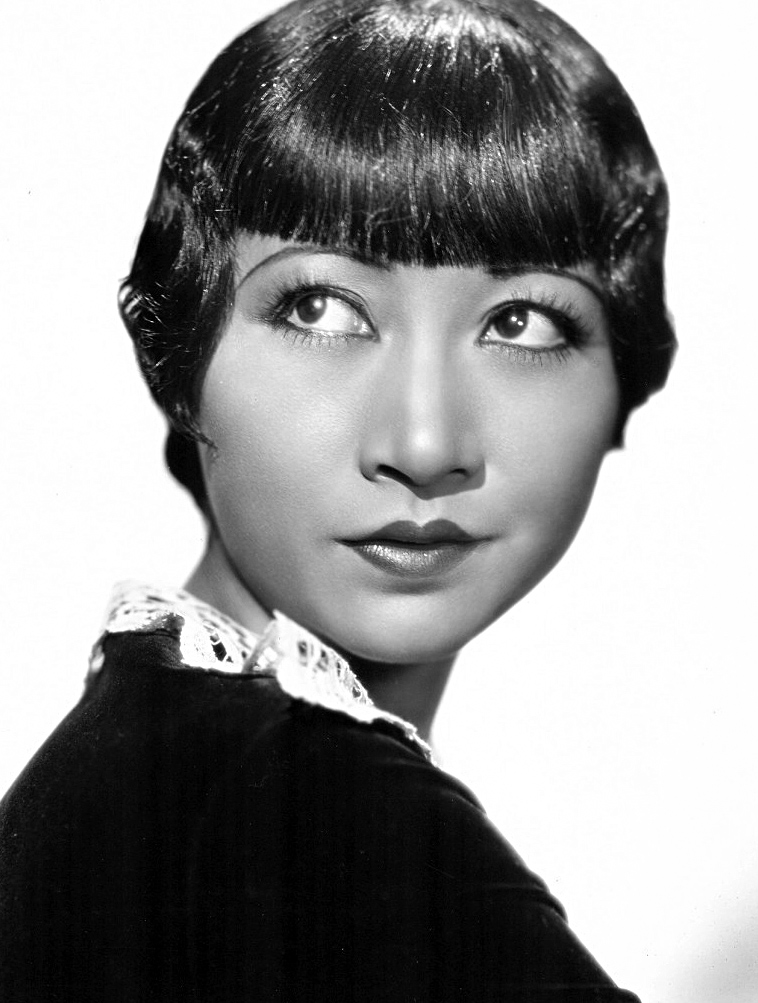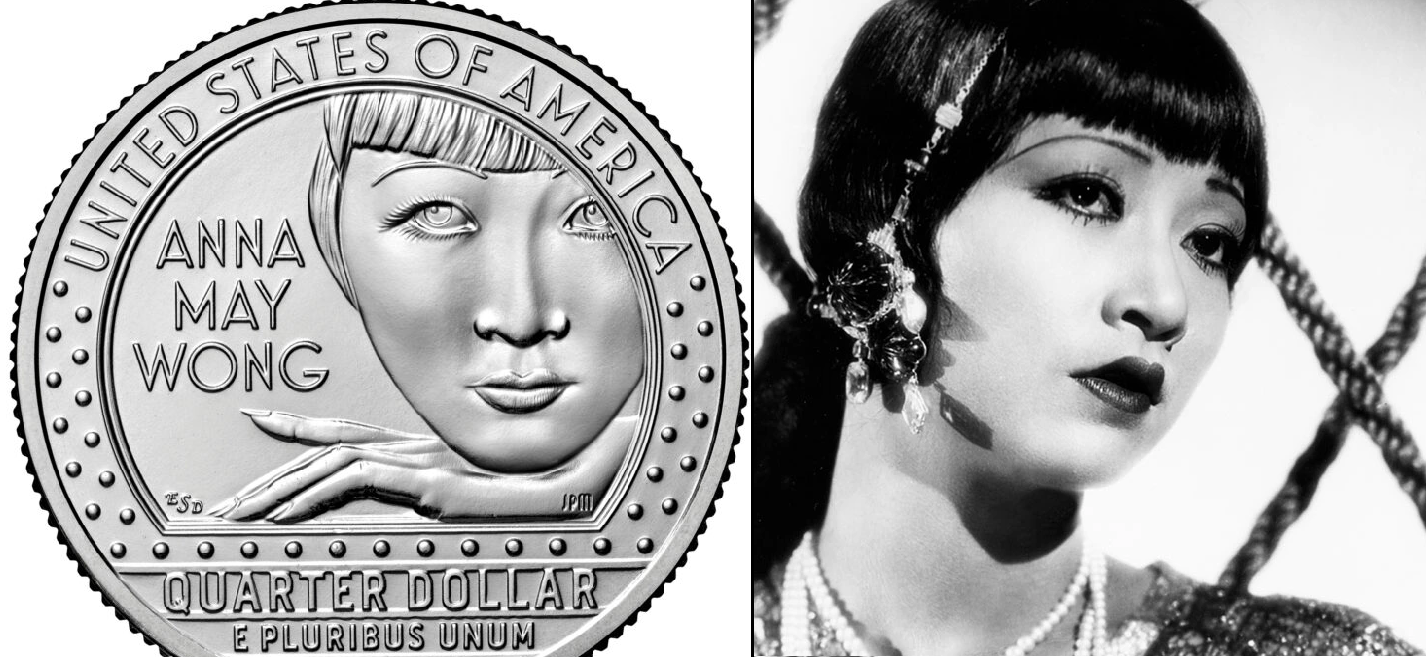We’re finally going to see the first Asian-American on US currency in the year 2022 – the outstanding Anna May Wong.
Anna May Wong is considered by many to be the first Chinese-American Hollywood movie star. She starred in dozens of productions, with some of the more famous ones being Shanghai Express (1932), Java Head (1934), and The Toll of the Sea (1922), which was one of the very first films made in color.
Wong was an actress and activist whose career spanned silent film, sound film, television, stage, and radio.
She was the first prominent Asian-American actress, she used her time and money to help the Chinese during World War II and the Second Sino-Japanese War, and she challenged the way Asians were treated throughout her entire career.
It’s no wonder that Anna May Wong will be the first Asian-American on US currency through the 2022 – 2025 American Women Quarters series. Though it’s long, long overdue.
Let’s take a look into the life and career of this amazing Chinese-American woman and give her just a fraction of the respect she deserves.
Early Life and Career

Anna May Wong was born Wong Liu-Tsong on January 3rd, 1905 in Los Angeles, California to second-generation Chinese-American parents.
Wong always had an obsession with movies and often spent her time and money as a child seeing films in nickelodeon theatres, to the extent that it concerned and upset her father, as he believed this interrupted her studies.
As early as the age of nine Wong began asking filmmakers for roles, and by age 11 she had come up with her stage name: Anna May Wong.
She had numerous uncredited roles as extras before landing a credited role in Bits of Life (1921), the first-ever anthology film, which also starred the legendary Lon Chaney.
After her first leading role in The Toll of the Sea, she received stellar reviews, with Variety magazine commenting on her “extraordinarily fine” acting and further saying: “She has a difficult role, a role that is botched nine times out of ten, but hers is the tenth performance.”
Yet despite her outstanding success, Hollywood racism refused to give her solid roles due to her ethnicity. David Schwartz, the chief curator of the Museum of The Moving Image, put it quite aptly: “She built up a level of stardom in Hollywood, but Hollywood didn’t know what to do with her.”
Challenging Racist Roles

Hollywood’s racism continued to dominate Wong’s entire career, casting her as “exotic atmosphere” rather than utilizing her talent and skill.
Notably, she was always either cast as a naïve and demure “Butterfly” or a sly and deceitful “Dragon Lady”. Two offensive roles that she continuously tried to break free from her entire career.
Wong was repeatedly typecast and denied roles not only because of racism and judgment but miscegenation – they refused to give her leading roles where the love interest was white because mixed-race marriages were illegal.
Sick of being continually passed over, Wong left Hollywood in 1928 for Europe. During an interview for Film Weekly in 1933, Wong explained: “I was so tired of the parts I had to play.”
Wong went on to describe the frustration she faced in casting: “There seems little for me in Hollywood, because, rather than real Chinese, producers prefer Hungarians, Mexicans, American Indians for Chinese roles.”
In Europe, Wong became an absolute sensation and grabbed several starring roles, including Song (1928) and Pavement Butterfly (1929). Opportunities were much broader, which was also the case for actress Josephine Baker, another American person of color (but that’s another article).
Wong eventually returned to Hollywood, although its judgment and racism were no better than they had been.
One of the most devastating moments of Anna May Wong’s career was being denied the lead role in MGM’s The Good Earth (1937), a film that finally promised a positive portrayal of the Chinese.
She had made it clear several years prior that she had every intention to get the leading role in The Good Earth, O-lan. Los Angeles newspapers supported her in this, loudly proclaiming that she was the best choice for the role.
But instead, Wong was offered the role of the sneaky seductress and nothing more. She outright refused.
She was quoted as telling the MGM head of production, Irving Thalberg:
“If you let me play O-lan, I will be very glad. But you’re asking me—with Chinese blood—to do the only unsympathetic role in the picture featuring an all-American cast portraying Chinese characters.”
Anna May Wong was a talented actress and a fashion icon and still had to fight for everything she had due to hatred and racism. It’s no surprise why she was chosen as the first Asian-American on US currency.
All Americans fight for what they believe in and what they deserve. Even if they’re fighting America.
Activism

In order to complete her contract with Paramount Pictures, Wong starred in a series of B movies in the late 1930s. They were largely ignored by mainstream audiences and critics due to the low budget, and most likely, due to the positive portrayal of the Chinese.
Wong had a heavy hand in the creation of these films, and as such, they featured Asian people as competent heroes instead of devilish villains. This was noticeable enough that the Chinese consul to Los Angeles gave his direct approval to two of them, Daughter of Shanghai (1937) and King of Chinatown (1939).
Which was one of the only times that the Chinese approved of anything she did. Being rejected by both China and America was a struggle for Wong. She spoke of this after spending a year in China: “It’s a pretty sad situation to be rejected by Chinese because I’m ‘too American’ and by American producers, because they prefer other races to act Chinese parts.”
The latter, King of Chinatown, got praise despite negative reviews because of its meaningful storyline. The plot features Wong’s character as a surgeon who sacrifices a high-paying promotion in order to devote herself to aiding in the Japanese invasion of China.
Raising awareness of the war wouldn’t be the only thing that Wong did to aid the Chinese in this struggle with Japan.
In 1938, Wong auctioned off some of her old movie costumes and donated the money to Chinese aid and refugees. She engaged in numerous events and appearances to support and raise money for war efforts, including authoring the preface to the 1942 cookbook called New Chinese Recipes, the proceeds of which were dedicated to United China Relief.
It’s worth noting that the first Asian-American on US currency was indeed an actress and entertainer first – but philanthropy was high on her list.
The First Asian-American on US Currency is Long Overdue

In a country where the spread of diversity is, I’ll be honest, damn sluggish, it’s good to finally see the first Asian-American on US currency. Even though I believe it should have been much, much sooner than 2022.
But I do feel a certain joy and satisfaction knowing that it gets to be Anna May Wong. A hardworking woman who faced adversity from both sides – too American for the Chinese, too Chinese for the Americans.
Yet she always upheld her pride in her ethnicity and background. During a period of racism, hatred, and judgment, Wong fought to humanize the Chinese to American audiences. She fought to break racial barriers.
And to a handful of people, it worked. Wong’s hybrid image of a typical American flapper and a proud Chinese woman helped combat the notion that the East and West were inherently different.
Although Anna May Wong isn’t as remembered as I would prefer, she’s still honored annually at the Asian-American Arts Awards with the Anna May Wong Award of Excellence. And now she’ll be the first Asian-American on US currency.
Anna May Wong never got to see the success she achieved – and it’s long overdue – but it’s still there.
For more on Chinese culture in the film industry, check out our articles The Shameful Criticisms of ‘Turning Red’ and ‘Shang-Chi’ Delivers Epic Superhero Action and Positive Asian Representation.

Comments